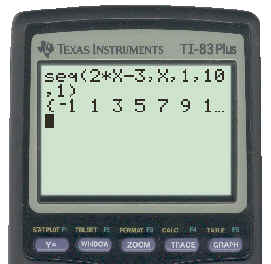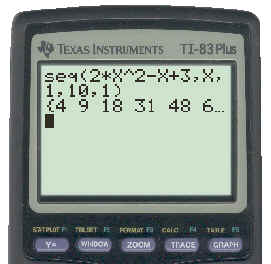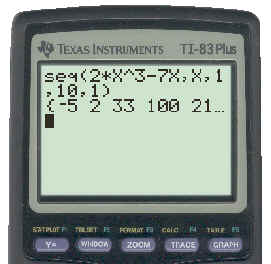Investigation 2: Number Patterns that Grow, Part 2
Test yourself (Answers)
- tn = 2n - 3
t1 = 2(1) - 3 = 2 - 3 = -1; t2 = 2(2) -
3 = 4 - 3 = 1; etc. You could also use your calculator which
gives:

Sequence = {-1 , 1, 3, 5, 7, 9, 11, 13, 15, 17}
D1 = {2 , 2 , 2, ... , 2, 2}
The constant difference is at level 1 and the generating function is
first degree (linear).
- tn = 2n2 - n + 3
t1 = 2(1)2 - 1 + 3 = 4; t2 = 2(2)2
- 2 + 3 = 9; etc. Again, using the calculator we get:

Sequence = {4, 9, 18, 31, 48, 69, 94, 123, 156, 193}
D1 = {5 , 9 , 13, 17, 21, 25, 29, 33, 37}
D2 = {4, 4, 4, 4, ..., 4}
The constant difference is at level 2 and the generating function is
second degree (quadratic).
- tn = 2n3 - 7n
t1 = 2(1)3 - 7(1) = 2 - 7 = -5; t2 =
2(2)3 - 7(2) = 16 - 14 = 2; etc. Again using the
calculator we get:

sequence = {-5 , 2 , 33 , 100 , 215, 390, 637 , 968, 1395, 1930}
D1 = { 7 , 31, 67 , 115 , 175, 247 , 331, 427 ,
535}
D2 = {24 , 36, 48, 60 , 72 , 84 , 96 , 108}
D3 = {12, 12, 12, ..., 12}
The constant difference is at level 3 and the generating function is
third degree (cubic).
|

